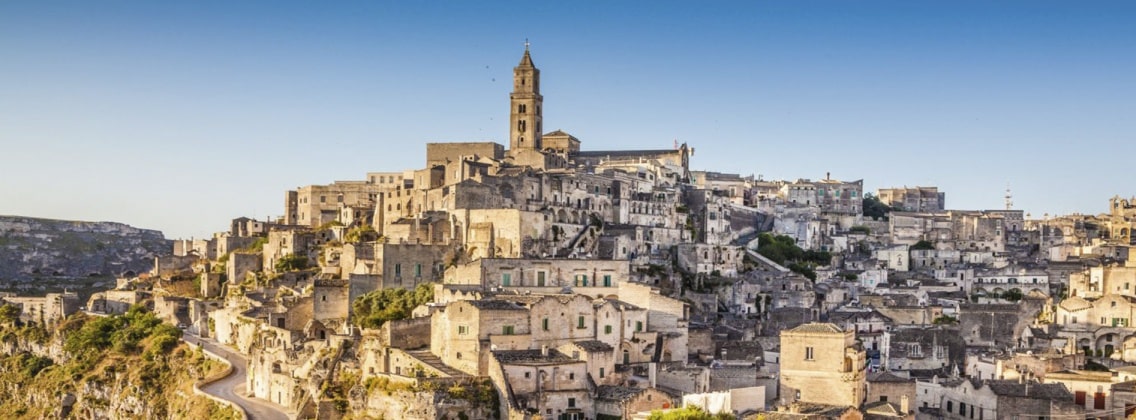
Basilicata
Visit Basilicata, between rocks, woods and natural masterpieces
Things to do in Basilicata
All the experiences and attractions for the most popular activities.
Territory of Basilicata
The territory of Basilicata is mainly mountainous and hilly. It has the highest peaks in the Lucanian Apennines: the Pollino and Sirino massifs, Monte Alpi, Monte Raparo and the Maddalena mountain range. Basilicata also boasts the presence of an inactive volcano: Mount Vulture.
The main plain of Basilicata is the plain of Metaponto.
Basilicata overlooks the Ionian Sea and the Tyrrhenian Sea, where the Gulf of Policastro is located.
Useful information about Basilicata
Basilicata, also known as Lucania, is a region in southern Italy. It is divided into two provinces: the province of Potenza, which is also the capital, and the province of Matera. In addition to Potenza and Matera has other important centers in Policoro, Melfi and Pisticci. It is bordered to the north and east by Puglia, to the north and west by Campania, to the south by Calabria, south-west is washed by the Tyrrhenian Sea and south-east by the Ionian Sea.
Discover the Italian Ambassador of Excellence in this region
Looking for tips for your next trip? Ask Monna Lisa.

Places and tours of Basilicata
Listing places and itineraries in Basilicata inevitably leads us to distinguish from the artificial beauties, of great historical and cultural value, and the natural beauties that this region can offer thanks to the variety of its landscapes.
The Basilicata region offers evidence of any era from the ancient settlements of the park of Murgia materana, some of which date back to the Palaeolithic from which came to life the Sassi of Matera, famous throughout the world, which lasted until the Baroque period, which house an impressive number of houses and monuments and rock churches.
Very important are also the testimonies of the Magna Graecia that we find, for example, in the archaeological park of Metaponto.
From the point of view of naturalistic tourism we remember the Pollino National Park, one of the most beautiful natural parks in Italy, the lakes of Monticchio, the landscape of Val d'Agri and the maritime beauty of the Tyrrhenian coast.

Unesco Sites in Basilicata
Stories and traditions of Basilicata
Lucana's history is rich and important. This region was the cradle of settlements of the Palaeolithic era and, later, has seen various historical phases through its territory: the colonization of Magna Graecia, the Roman conquest, and the subsequent Byzantine, Lombard and Norman dominions, then follow the events of the Kingdom of Naples and finally the Kingdom of Italy and the Italian Republic.
Each of these phases has given rise to particular traditions that have evolved with the territory: this is the case, for example, of the May of Accettura, an ancient arboreal ritual of pagan origin with the aim of bringing to their lands the fertile spirit of nature, which over the years has assumed a religious significance and is still celebrated.
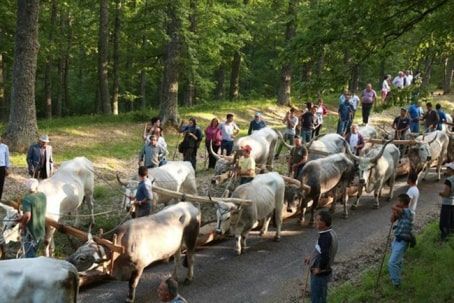
Basilicata Region
Basilicata is one of the regions that composes the extreme south of Italy.
Nestled between three regions it borders to the north and east with Puglia, to the north and west with Campania, to the south-west overlooking the Tyrrhenian Sea in the Gulf of Policastro, to the south borders with Calabria, to the south-east instead overlooking the Ionian Sea in the Gulf of Taranto.
Basilicata has an area of just over ten thousand square kilometers, is divided into two provinces: Potenza and Matera.
It has a largely mountainous and hilly territory and only for a small flat part. Its only flat area is the plain of Metaponto, located south of the region along the Ionian side.
Its massifs are the highest peaks that compose the Lucan Apennines with Monte Pollino (2,248 m) Monte Papa (2,005 m) Monte Alpi ( 1,900 m) Monte Raparo (1,764 m) and Monte Volturino (1,835 m).
Mount Vulture in the northwest is a now inactive volcano. Its hilly area consists largely of clay soil, which is why Basilicata is a region subject to landslides and landslides.
Rich in torrential rivers, among the most famous are the Basento, the Bradano, the Cavone, the Sinni, the Agri and the Noce. On the border with Puglia and Campania the river Ofanto. There are also streams worthy of note such as the Sauro that converges in the river Agri and the Gravina di Matera and the Gravina di Picciano that instead converge in the river Bradano.
As for the lakes of greater importance, we have that of Monticchio, at the foot of Mount Vulture.
Of volcanic origin, which became a regional reserve in 1971.
Place rich in vegetation and habitat of a rare endemic species of a night butterfly: the Brahamaea europaea.
Lake San Giuliano, Lake Monte Cotugno, Lake Gannano and Lake Pietra del Pertusillo are all artificial, built for irrigation or drinking.
Its coasts are very diversified, on the Tyrrhenian side it has high and rocky coasts, on the Ionian stretch instead we have low and sandy coasts.
Basilicata has a rich and diversified environmental heritage, in fact its territory is divided into six different sub-areas, each with its own characteristic:
● Vulture-Melfese located to the northeast characterized by highlands cultivated with wheat, instead in Vulture we have a presence of woods alternated with vines;
● Potentino and Dolomiti Lucane located to the north-west with a strong presence of woods and its mountains are between 1,200-1,500 meters high; ● Massif of Pollino and Mount Sirino located to the south-west that constitutes the most impressive peaks of Basilicata with heights above 2,000 meters, an area characterized by the presence of forests and woods;
● Val d'Agri located in the center-west, is a plateau at an altitude of 600 meters that follows the path of the river Agri until you reach the plain of Metaponto;
● Matera hill located in the center-east consists of hills of medium height characterized by clay soils subject to severe erosion of rainwater that give rise to geomorphological phenomena known as badlands and barren;
● Metapontino located south-southeast characterized by a large plain of alluvial origin, exploited with intensive agriculture.
Basilicata was known as Lucania until the 10th century. The name Lucania is attributed to several origins : the first is that it is thought to derive from the Latin from "leucos", which means white, shiny.
Linked to the legend of a people traveling south who arrived in this land from which he could see the sun rise, light, called it Lucania that is "land of light".
Another variant could be the origin from "lucus" meaning forest . Very likely also the origin from the Greek from the term "lycos" which means wolf, derived from hirpos, would find analogy in the name of the Hirpini a tribe very close to the Lucanians whose name meant wolf.
The origin of the name Basilicata instead could have originated from the Greek basileus which means official of the king, but it seems that such figures did not exist. The most accredited hypothesis is that the name derives from the basilica of Acerenza, since the bishop had jurisdiction over the whole territory.
The name first appeared in the Catalogue of Barons, which corresponded to a list of fiefs of the Norman Empire, then dependent on the Eastern Roman Empire.
In ancient times Lucania was wider and its borders were different from those we know today, it included most of the territories of Campania and Calabria. However, it did not include the territory of Matera, and the northernmost area of Vulture.
The sources of the fifth century tell us that reference was made to the Great Lucania and that its borders were extended to the Strait of Messina and was inhabited by a people of Samnite origin.
These boundaries were maintained even when the Augustan regions were established in 7 A.D. as part of the Regio III Lucania et Bruttii. Different was for Matera and Vulture that were included in the Regio II Apulia and Calabria
As for the history of the territory, starting from prehistory we have the first settlements that date back to the Paleolithic. We have shelters dating back to the Mesolithic. Fortified villages dating back to the 5th millennium B.C. and in the Iron Age an indigenous culture was established. In 300 B.C. there were the first contacts with the Romans that contributed to the conquest of Taranto and the Appian Way was extended to Brindisi. Two colonies were founded: Potentia and Grumentum.
Following the fall of the Roman Empire it was under Byzantine rule until 568 with the Lombard domination that included it in the Duchy of Benevento. It returned under Byzantine rule in 968 with the establishment of the theme of Lucania, which disappeared with the conquest by the Normans leaving room for the birth of the Duchy of Puglia and Calabria of which Melfi was the capital. In 1231 the executioner of Basilicata was established by Frederick II who also issued the Constitution of Melfi.
Its borders began to coincide with the current ones, excluding Matera which was included in 1663, part of Melandro, Val d'Agri and Metapontino. During the Angevin domination there was a demographic decline that found a growth only in the middle of the XV century, with the exodus from the Greek and Albanian regions, after the fall of Constantinople.
In modern times Basilicata was strongly contested between French and Spanish. We are between the fifteenth and sixteenth centuries, during this period Melfi was heavily besieged by the French army.
In 1642 he managed to have institutional autonomy. In 1663 Matera was established as a capital that until then was part of the Land of Otranto. In this way they ensured better control. In 1735 it fell under the rule of the Bourbons of Naples and in 1799 the Republic of Naples was proclaimed.
Seven years later the French managed to seize the territory despite the resistance of the people and moved the province of Basilicata from Matera to Potenza. Having set up his headquarters in Potenza, Charles Antoine Manhès took a strong action against the brigandage between Calabria and Basilicata.
After the Unification of Italy in 1860, Basilicata was the first province of the continent of the Kingdom of the Two Sicilies to declare its inclusion in the unitary state. In fact Garibaldi reached Basilicata without meeting opposition and was joined by three thousand men of the brigade "Cacciatori Lucani".
Following the Unification of Italy, however, Basilicata did not see the change and the much desired improvement in fact it came to a revolt that assumed more and more
the features of a civil war. This war continued for the next ten years, affecting the provinces of the former Kingdom of the Two Sicilies, causing thousands of deaths.
At the end of the 19th century, a political movement, Meridionalism, began to favour the south. Its most important members were: Francesco Saverio Nitti, Ettore Ciccotti, Raffaele Ciasca. Thanks to this action Basilicata had an important development, schools, aqueducts, the reclamation of some territories, the construction of roads.
During the fascist period Basilicata became a land that housed opponents of the regime, among them was Carlo Levi who described his experience in the novel "Christ stopped at Eboli", where he narrates the living conditions and backwardness of those territories.
In 1927 Matera became a province. In 1943 Matera was the first city in the Mezzogiorno to oppose the fascist regime, suffering reprisals together with Rionero. Cities such as Maratea, Potenza and Lauria were bombed by allies.
In 1944 there was a serious railway accident on the Battipaglia-Metaponto railway line where over 500 people died.
Immediately after the Second Great War there were protests related to the distribution of land among the peasants.
In November 1980 Basilicata was devastated by the Irpinia earthquake that caused 3,000 victims.
The Sassi di Matera in 1993 became a World Heritage Site under UNESCO protection.


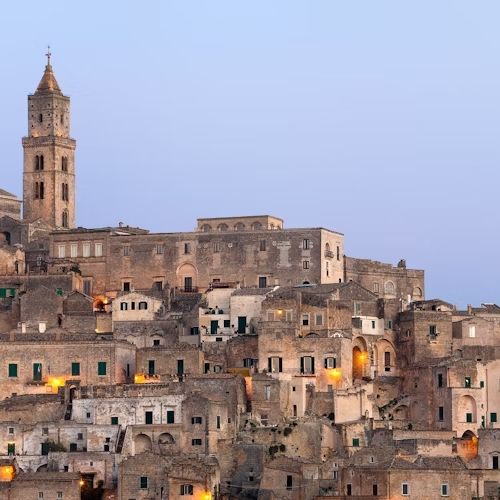
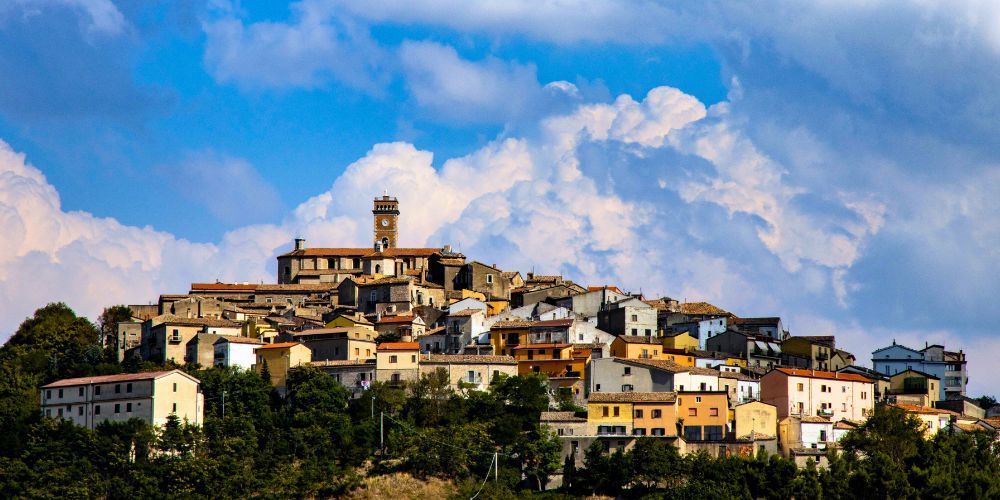
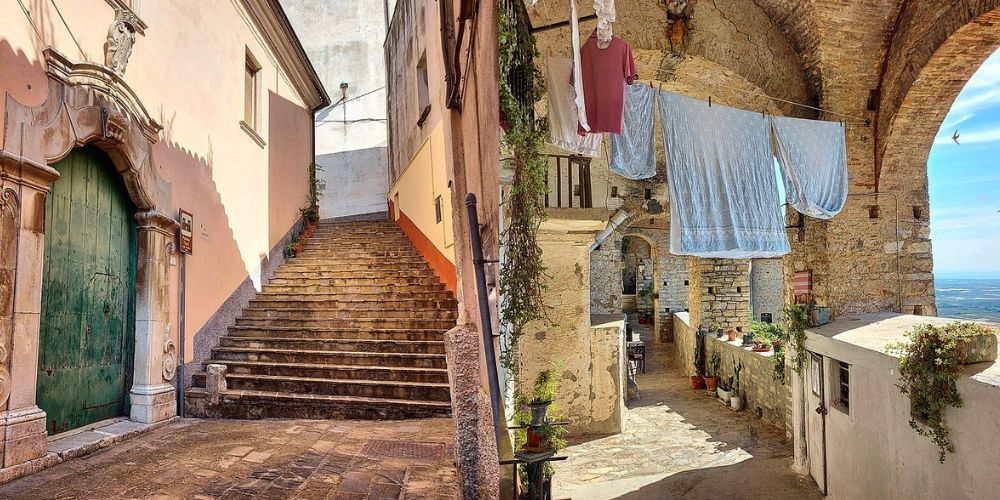
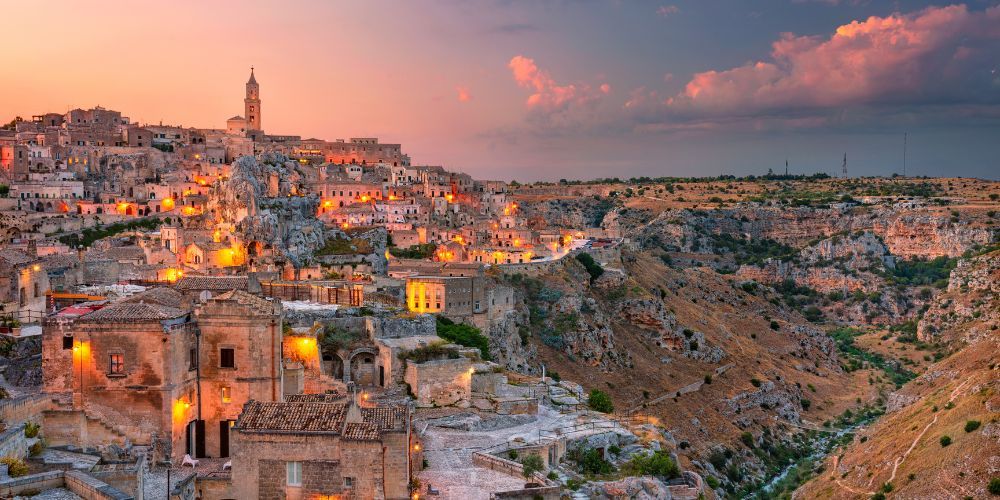
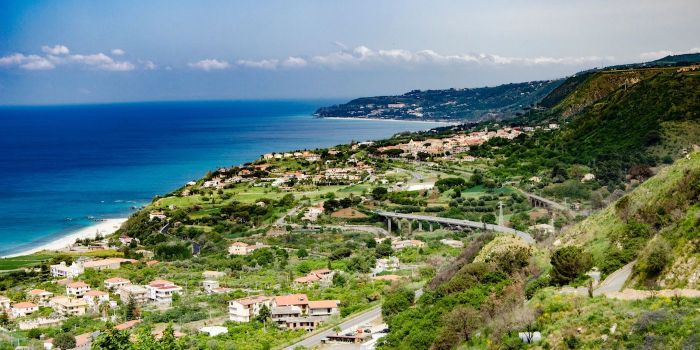
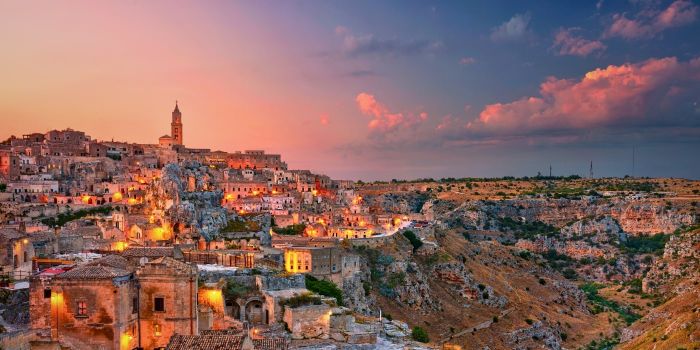
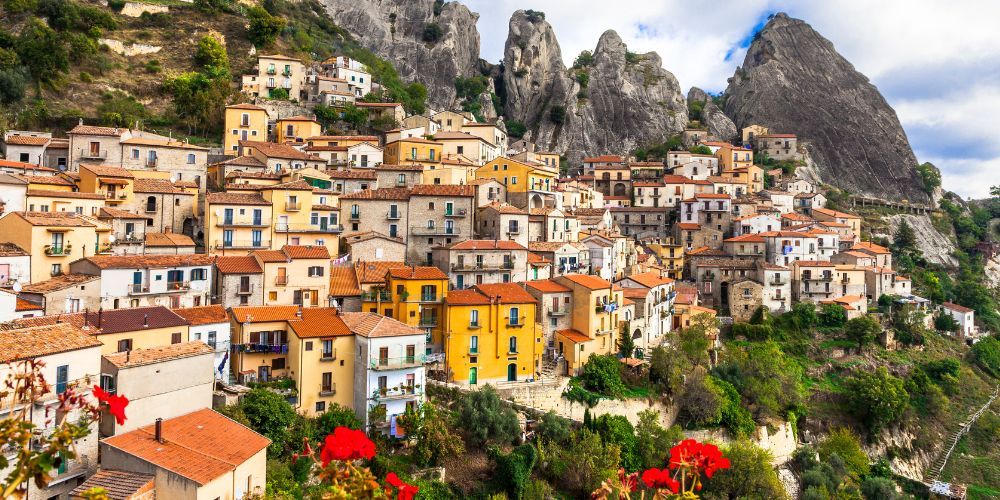
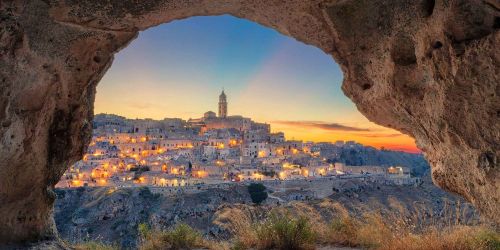
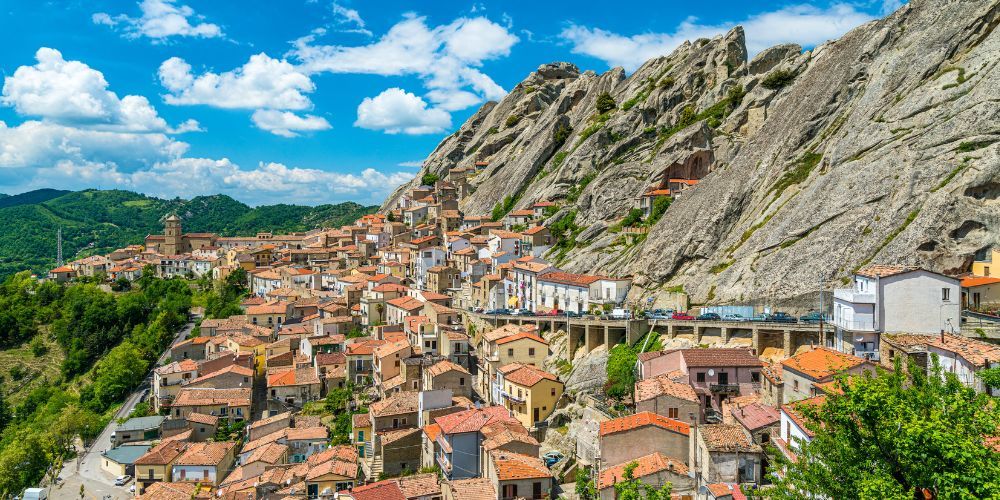
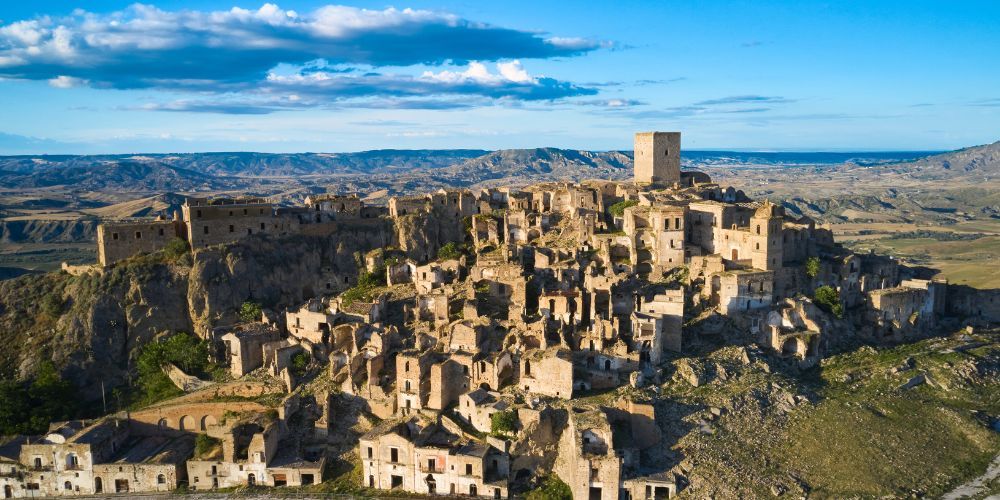
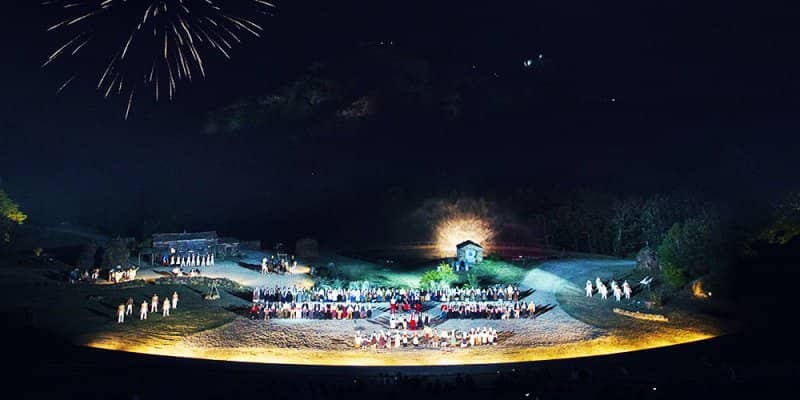
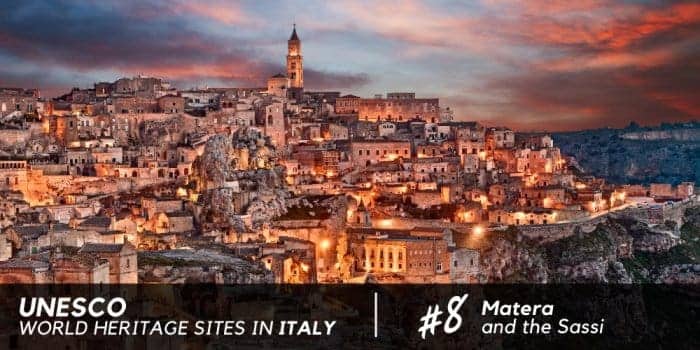
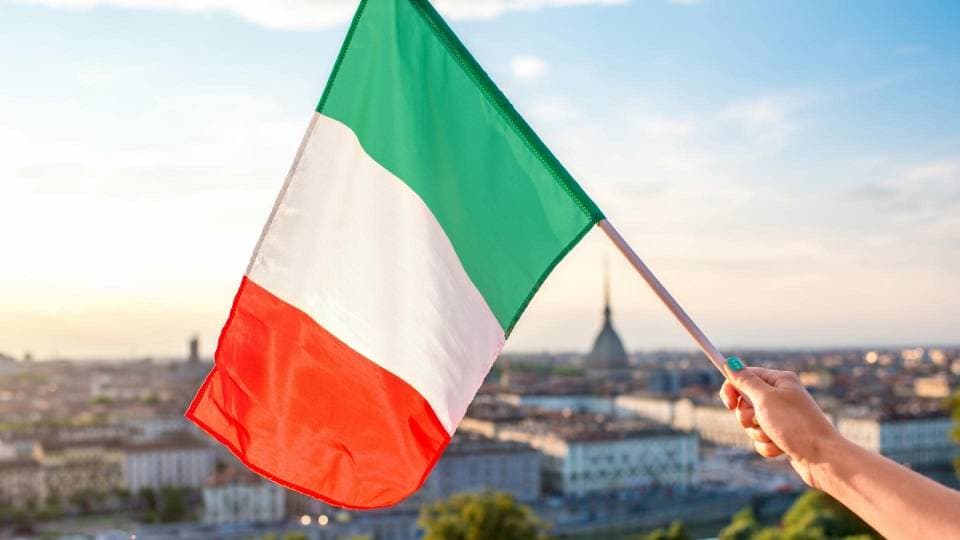
Ciao! I'm Monna Lisa, your digital travel designer. I'm here to help you plan your perfect trip to Italy.